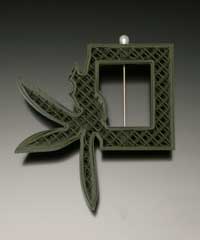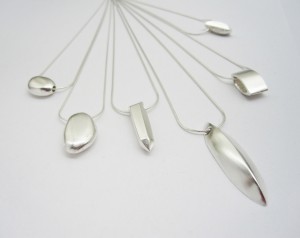
Hope Spinel surrounded by diamonds. Photo courtesy Bonhams.
Okay. My bias is going to show here. But when it comes to spinel, I think it’s one of the most under-rated and under-used stones in the jewelry industry. Part of the reason for that is because it’s not as common as, say, garnet or tourmaline. But to have a stone that is beautiful, is rarely treated, is extremely durable (it’s an 8 in hardness and has little to no cleavage risk), that comes in a luscious range of reds, pinks, purples, oranges, and blues, and to make little use of it is, well, spine(l)less! (Sorry.)
You know they’re beautiful when enormous spinels found their way into the Crown Jewels of England and were, for many years, paraded as rubies. (They can be that good!) And just this past week, an AMAZING spinel was sold at Bonhams, the auction house, in London, for an equally amazing record price of £962,500 (just under $1.5 million). The so-called “Hope Spinel” was once owned by Henry Philip Hope, 19th century London banker who also once owned the Hope Diamond. (Full disclosure: the Hope Spinel buyer was not me.)
It’s the range of subtle color is what really makes spinels useful to a designer. You could create a brooch, bracelet or neckpiece with a lovely sherbet-colored palette of spinels, or use spinels as accents for a flashy cabochon of agate. A deep-colored spinel would be a stunning centerpiece for any ring–and there would be virtually no wear issues!
But spinels have gotten a bad name for something that is not their fault. Spinel, like corundum (ruby and sapphire), is easily and inexpensively synthesized. Probably tons of spinels are churned out to fill the synthetic birthstone market. A great many of the “emeralds,” “aquas,” “peridots,” and “diamonds” you see in birthstone rings, necklaces, and pins are synthetic spinels. As a result, many, many people have come to think that “spinel” is synonymous with “fake.” Not so! However, it does mean that designers have to educate themselves first and their customers second, on the beauties and desirability of spinels.
Spinel is not often found in caliber-cut shapes and sizes. This, too, makes them perfect for designers as the stones demand unique settings. If you want matching sizes for a particular design, you may end up having to commission a cutting job. That may get to be expensive. Although at one time the lack of market familiarity meant spinels were often quite reasonably priced, that has changed. When the prices of rubies started going through the roof, buyers looked for a suitable substitute. As a result, spinels are climbing.
But it’s still a stone worth looking for. Just remember: The Hope Spinel is taken.
Like this:
Like Loading...



